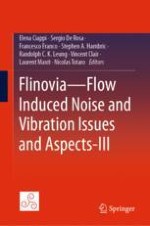2021 | OriginalPaper | Chapter
Validation of a Simple Empirical Model for Calculating the Vibration of Flat Plates Excited by Incompressible Homogeneous Turbulent Boundary Layer Flow
Authors : Stephen Hambric, Peter Lysak
Published in: Flinovia—Flow Induced Noise and Vibration Issues and Aspects-III
Publisher: Springer International Publishing
Activate our intelligent search to find suitable subject content or patents.
Select sections of text to find matching patents with Artificial Intelligence. powered by
Select sections of text to find additional relevant content using AI-assisted search. powered by
